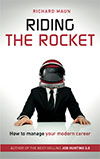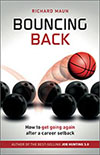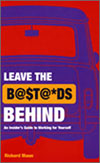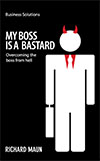better business blog
Tips and stories to add value to you and your organisation

A Brilliant Model For Home Working
It’s interesting that in all the talk of working at home people can become too focussed on one of these words.
Work.
And the ‘home’ part can easily be neglected. Home working is a noble thing and although we can be productive at home it’s important to remember that life falls into many parts.
We need to attend to all of them, otherwise the work can overwhelm us and we can muddy the boundaries between where home and work begin and end.
A favourite model of mine, that helps me to be more aware of how I structure time, is called, rather niftily …Time Structuring.
The credit goes to Eric Berne, the founding father of Transactional Analysis. I tip my hat to him.
He believed that humans need structure in their lives and were hungry for it.
I think he was right. Children tend to feel safer when they have structure and know the rules and boundaries. Without any structure we have chaos and that can feel freeing at first and then it becomes an energy sapping place to be.
Berne’s model of Time Structuring suggests we move between the following areas during our day. They are:
1. Withdrawal. This is when we are on our own, or maybe track out of a meeting by checking our smartphone. Time alone is okay, as long as we don’t slump into depression. I’m sure we all need quiet time sometimes.
2. Ritual. We engage with others in very safe ways. Hello…how are you? I’m fine. How are you? …And so on. Little smiles and friendly greetings brighten our day.
3. Pastiming. We have an easy conversation about general subjects. Travel, the weather, last night’s television. These conversations flow and make us smile and are a good break from work. We need them in our lives.
4. Activity. This can be work or play. Productive time online, or having fun with a leisure activity. In a ‘normal’ working day this can be a solid six hours of employment (allowing for two further hours of pastiming and ritual to make life more pleasant).
5. Games. This could be a whole series of blogs, but to keep things simple here, let’s define games as sneaky mind reading failures. Instead of asking for a hug, we sit on the sofa and ‘assume’ our partner knows what we want. When they don’t provide it we get cross with them – we still get some attention, but in a grumpy way.
5. Intimacy. When we have clear, open two-way honesty we have intimacy. We can say what we like and know the other party will take it in good spirit. We feel closeness with them and give them the same regard. A lovely place to be!
Now the thing is, when we get stressed or tired we may play more games. If there’s too much work over too many days our spirits can sink low. We need to pay attention to how much pastiming we have in our day and how much our work is broken up with healthy contact and leisure time.
Perhaps working at home needs to be re-labelled as ‘being human at home.’
We need to structure our time to ensure we attend to all parts of Time Structuring, and keep games to a minimum.
I find this model very useful. It helps me to be mindful of how I’m spending my time. I work online. And I organise friendly hellos online too. I work and I pastime. I’m productive and chatty.
If you’re an employer, manager, or team leader then have a think about how you can engage colleagues in more pastiming.
All meetings do not have to be work focussed. A great tip is to allow people to ‘check in’ about how they are doing and be comforted by the contact time.
Good work flows from happy people. Everyone needs contact in different ways and we can all be responsible for getting our needs met and supporting others to meet theirs.
Have fun having non-work meetings!
Take care. Keep well.
Next week: Please Wear Trousers!
e-publishing
Click icon for details


recent posts
browse archive
books
Click cover to view details on Amazon
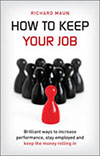
How to Keep Your Job
Brilliant ways to increase performance, stay employed and keep the money rolling in
Published 2011 Marshall Cavendish
208pp
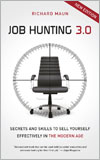
Job Hunting 3.0
Secrets and skills to sell yourself effectively in the Modern Age
Published 2010 Marshall Cavendish
260pp

 RSS
RSS